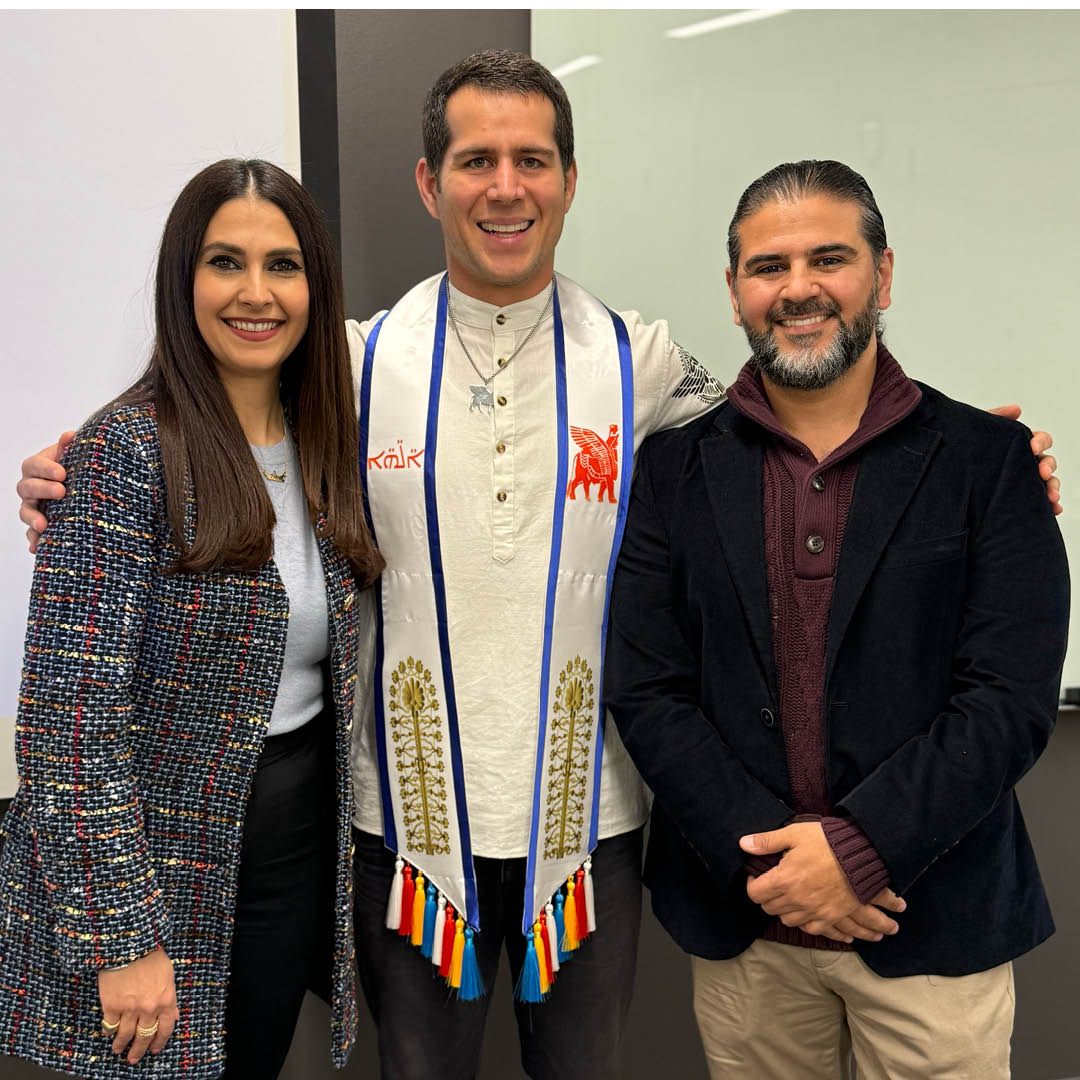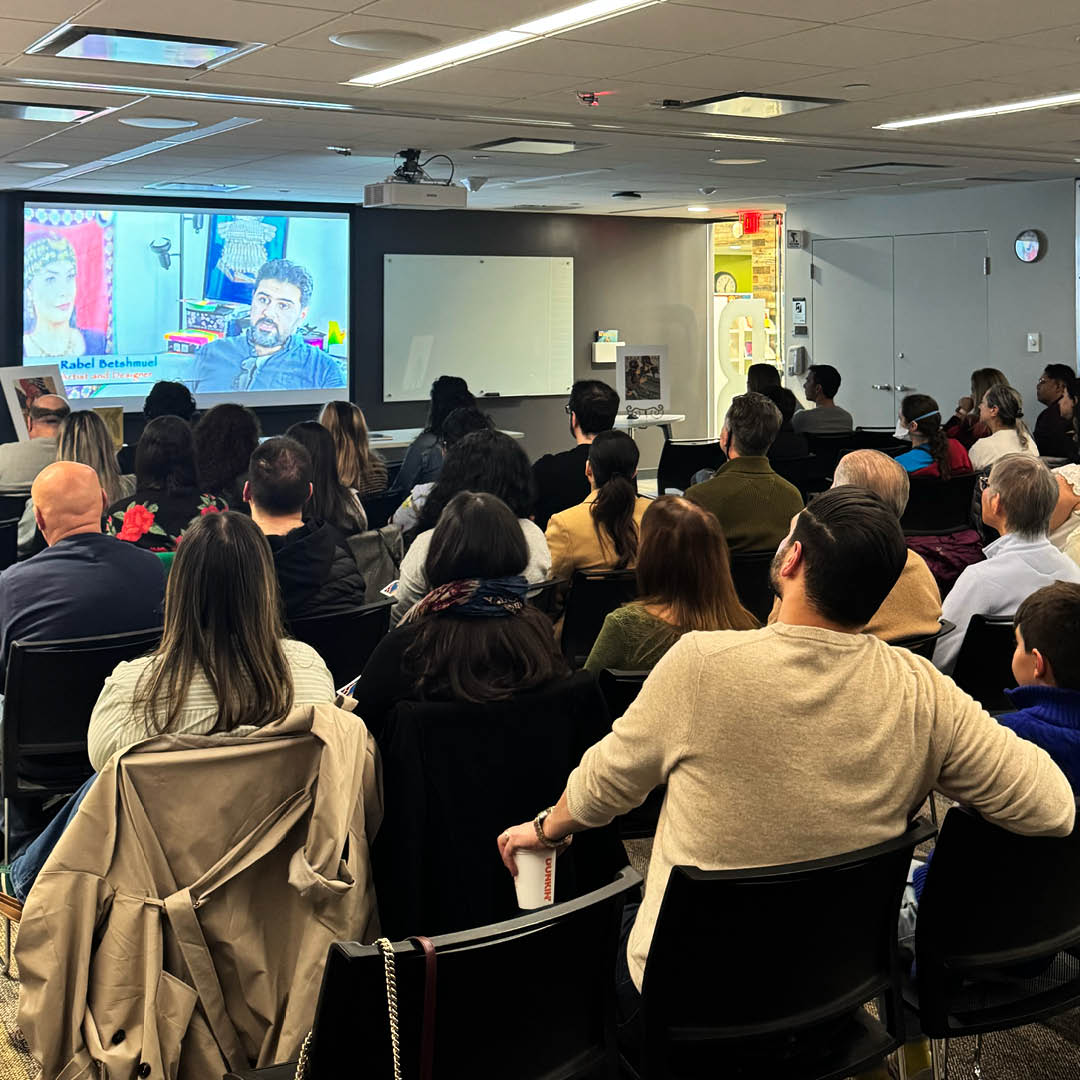
Shmuel Tamo – IRP Founder

L to R: Atour Sargon, Shmuel Tamo and Rabel Betshmuel

Lincolnwood Public Library

Community members
FROM LECTURES TO LIVING EXPERIENCES
Participatory Moments That Engage and Inspire
For too long, educational events in the Assyrian community have followed the same well-worn format: a speaker at a podium, often with a Ph.D., lecturing on a narrow, academic topic to a quiet room of mostly older attendees. These lectures—however well-intentioned—struggle to connect with today’s audience. Attendance is consistently low, often hovering around 20 to 30 people, and the format feels outdated, especially to younger generations who crave interaction, relevance, and meaning.
What we need now is a shift: a move from traditional academic-style lectures to immersive experiences that create connection, evoke emotion, and invite participation.
A recent example of this new approach took place at the Lincolnwood Public Library, where filmmaker Shmuel Tamo hosted a special screening of his documentary Sights and Sounds of the Assyrian Diaspora: Art in Response to Statelessness.
This wasn’t just another lecture. It was a community experience.
Audience members were not passive listeners—they were participants. They came not just to watch a film, but to engage in a conversation with the filmmaker and some of the featured Assyrian artists. The room wasn’t filled with abstract theory—it was filled with real people telling real stories about art, identity, and survival. It was a space where the past met the present and created momentum for the future.
The energy was different. So was the turnout.
Experiences work because they connect to people’s lives. They center storytelling, human emotion, and shared presence. They’re not about hierarchy; they’re about community-building. In a world overflowing with information, people don’t just want to be informed—they want to feel something, to see themselves reflected in what’s being presented.
Lectures often isolate. Experiences invite.
This is a call to Assyrian organizations, cultural centers, churches, and educators: It’s time to evolve.
It’s time to design educational events that are as dynamic as our identity—events that meet people where they are and make them want to come back.
Instead of one expert speaking at a crowd, what if we:
- Created spaces for dialogue, not just presentation?
- Included art, music, film, and movement as tools of education?
- Made events intergenerational, where elders and youth learn from each other?
- Designed workshops and forums that ask the audience to respond, reflect, and participate?
We are in a moment of possibility. The Assyrian renaissance isn’t just happening in art or scholarship—it’s also about how we gather, how we learn, and how we tell our stories. Let’s stop settling for outdated formats that only reach a few. Let’s create experiences that reflect who we are—communal, creative, and evolving.
As Shmuel Tamo’s event showed us: when you invite the community into the experience, they show up—not just with their bodies, but with their hearts.
